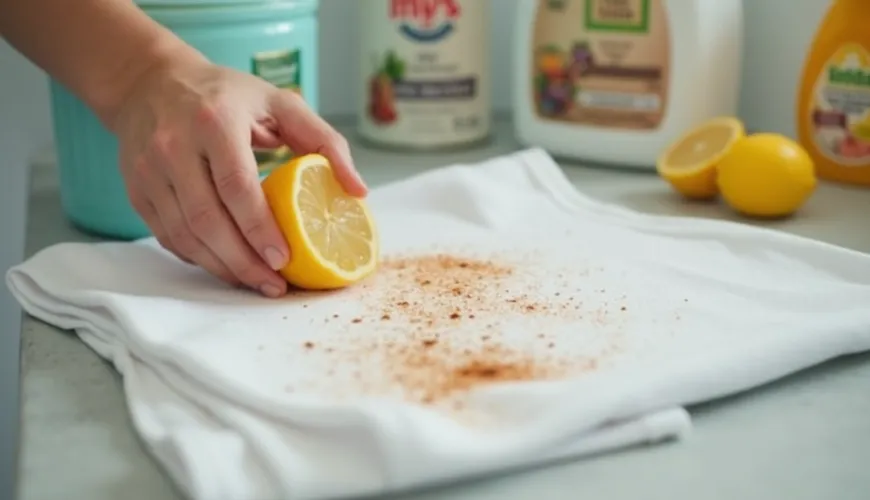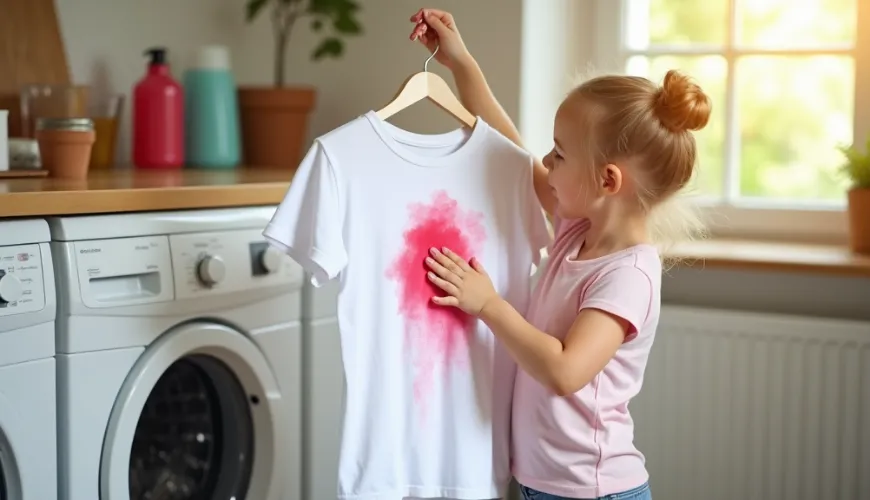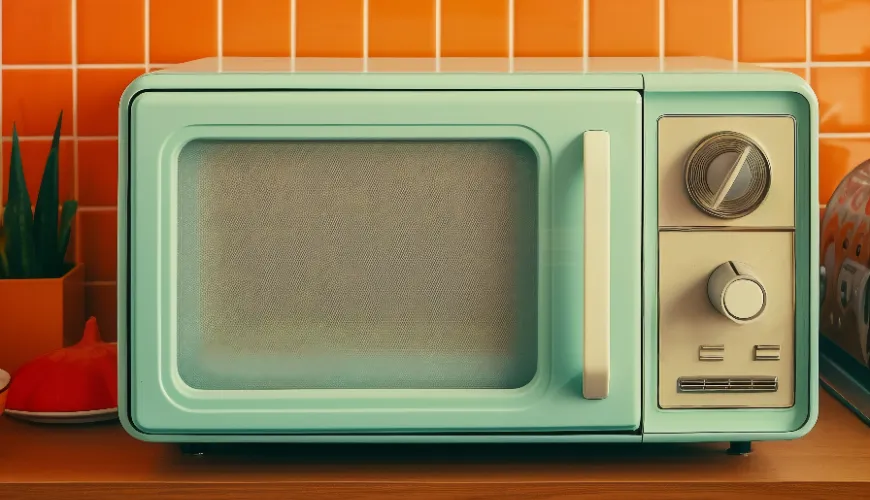
How to Remove Rust from Metal Using Natural Methods and Without Chemicals

How to Deal with Rust – Natural and Effective Ways to Remove Rust from Metal, Clothing, and Tiles
Rust – an inevitable consequence of moisture and oxygen acting on metals, which can cause more damage than it might seem at first glance. Whether it appears on an old garden bench, a favorite knife after the dishwasher, or leaves an unfortunate stain on clothing or tiles, it's a problem that can be quite bothersome. The good news is that there are many gentle and eco-friendly methods to effectively remove rust without immediately resorting to a chemical cleaner full of warning symbols.
Let's take a look at how to do it.
Why Does Metal Rust?
Rust forms as a result of the oxidation of iron – that is, the reaction of metal with oxygen in the presence of water and possibly salts. This process, known as corrosion, causes originally solid and shiny metal to turn into a reddish, brittle material. We most commonly see this in iron, but other alloys (such as steel) are no exception. And although it is often said that "what rusts cannot be saved," the opposite can be true.
How to Remove Rust from Metal – Gently and Without Chemicals
One of the most well-known home tricks is to use vinegar – preferably white distilled vinegar. Simply submerge the metal object in vinegar for several hours (in the case of smaller items like screws, scissors, or tools) and then remove the loosened rust with a brush or scouring pad. This works great because the acidity of vinegar disrupts iron oxide and helps dissolve it.
If it's a larger item that can't be submerged, simply apply a vinegar-soaked cloth to the rusty area and let it work. Some people also add a bit of baking soda, which increases the abrasive effect and aids in the mechanical removal of rust.
Another option is lemon juice combined with salt. The salt acts as an abrasive component, while the lemon with its citric acid content effectively breaks down the rust. This method is ideal for more delicate metal surfaces, such as kitchen utensils or jewelry.
Experiences speak clearly – one blog reader shared a story where an old rusty cleaver inherited from his grandfather came back to life thanks to a vinegar bath, followed by gentle sanding and coating with protective oil. It reportedly serves better today than a modern alternative.
What to Do When Rust Leaves a Mark on Clothing?
Rust stains on clothing are unfortunately quite stubborn. Especially if they have already been ironed or gone through a dryer, returning to their original state can be complicated. But not impossible.
One of the most effective solutions is a mixture of lemon juice and salt. Moisten the stain, sprinkle it with salt, and drizzle with lemon. Let it sit in the sun for several hours – sunlight naturally accelerates the entire process. Then wash as usual. If the clothing is white, you can also try hydrogen peroxide, but be cautious with colored fabrics to avoid fading.
There are also eco-friendly rust removers specifically designed for textiles – often based on gentle acids such as oxalic or tartaric acid. These products are chlorine-free, fragrance-free, and gentle on the skin, making them suitable for sensitive individuals or children's clothing.
How to Remove Rust from Iron and Prevent Further Rusting?
Iron is one of the most susceptible metals to corrosion. If you've removed the rust – whether chemically or naturally – it's advisable to protect the iron from further oxidation. This means applying a protective layer. It can be mineral oil, beeswax, or natural carnauba-based wax. In outdoor settings, a coat of eco-friendly metal paint without solvents and heavy metals can help.
For tools you frequently use outdoors, it's ideal to clean them after each use and store them in a dry place. Even a few drops of water in a shed can cause your rusty rake to leave you with just the handle come spring.
What to Do When Rust Gets on Tiles?
Rust on tiles often occurs from a metal flowerpot, old tools, or even rusty water from pipes. The good news is that here too, you can rely on natural methods with surprisingly good results.
Try a mixture of baking soda and a bit of water to create a paste and apply it to the stain. Let it sit for 15–20 minutes and then wipe it off with a brush. For stronger stains, a combination of lemon juice with baking soda, which creates a fizzing reaction similar to cleaning a drain, is effective. Again, let it sit for a while and then scrub.
If nothing helps, the last option is to use an eco-friendly rust remover based on oxalic acid, which is biodegradable and effective even on porous materials like natural stone. It's important to first test the product's reaction on a small inconspicuous area, as some types of tiles may be sensitive to acids.
When Prevention Pays Off
Removing rust is just one part of the problem. The real key to long-term peace of mind lies in prevention. For metal objects, this means primarily regular maintenance, dry storage, and potential surface impregnation. For clothing, it's good to avoid contact with rusty objects – like leaning a white shirt against an old fence. And for tiles? You can protect them with mats under flowerpots or regular inspection of gutters and drains.
According to experts from the British ecological initiative WRAP, regular maintenance and gentle care can extend the lifespan of household items by up to 60%, which has not only economic but primarily ecological benefits. Every item we keep in use for a few more years is a step towards more responsible consumption.
When Rust Is More Than Just an Aesthetic Problem
In some cases, rust can mean more than just a cosmetic flaw. For example, with kitchen utensils, rust buildup can threaten hygiene, and with load-bearing structures, significantly reduce their stability. Therefore, it's important not only to remove rust but also to understand why it formed – was it moisture? Improper storage temperature? Insufficient protection?
It's therefore useful to regularly check not only metal tools but also inaccessible places in the bathroom, kitchen, or basement, where humidity may be higher. Early detection of a small rusty spot can prevent larger repairs a few months later.
As the classic would say: "Corrosion doesn't wait. So why should we?" Spending a few minutes caring for the things we use daily pays off not only visually but often in the wallet as well.
Whether you need to remove rust from metal, iron, textiles, or tiles – remember that nature often offers us solutions that are not only effective but also gentle on our health and the planet.

